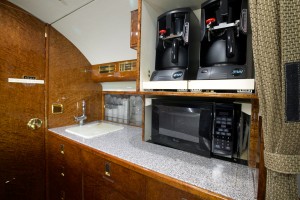
Aircraft prices are still declining, making beautiful slightly used airplanes even more attractive.
By Brad Harris
Sales and listings are definitely picking up, but aircraft prices remain flat, or in the case of older aircraft, continue to decline.
Many brokers have seen an uptick in the number of transactions; indeed, Dallas Jet International (DJI) is finishing up its busiest summer ever in 15 years of doing business.
The typical lifecycle of a business jet is 3-5 years with its first owner, who will then likely upgrade to a newer or larger aircraft. Many corporate and charter fleets have reached the end of that cycle and those one-owner aircraft are back on the market, creating an excellent opportunity for second owners who want a nearly-new aircraft at a very attractive price.
While this is great news for buyers, it can mean that sellers, particularly of older aircraft, won’t be able to sell their aircraft at a price as high as they had hoped.
Mark Phelps of Flying Magazine describes the scenario – the more aircraft on the market, the lower prices dip.
The most recent numbers for used business jets show the total number for sale has stayed level over the past several years – around 2,500. There were 1,662 jets for sale in September 2007. Compared with the first quarter of last year, there has been a 4.2 percent decrease in the number of sales (transactions) for jets, and the average time on the market is 71 days longer, despite a 3.3 percent decrease in average asking price. Transactions for turboprops were down by 8.8 percent compared with Q1 last year, but average asking price is actually up by 18.7 percent.
Used Business Aircraft Are Still a Good Buy, Mark Phelps, Flying Magazine
In the last few years, older aircraft are typically sold in growing markets such as Latin America or Asia, or even Africa. But the market (especially for older aircraft) has been increasingly saturated as that pool of used aircraft becomes larger.
Another wrinkle impacting prices of 10-20 year old aircraft is the difficulty financing older aircraft. Many financial institutions use the “rule of 20” in financing aircraft.
Many (aircraft finance providers), after all, got third-degree burns from repossessed aircraft collateral or returned leased aircraft following the 2008 market debacle, and as a result many follow the so-called “rule of 20,” according to which the financed aircraft and the loan (or lease) term must both be less than 20 years. Why? So that if the lender has to repossess or otherwise comes to own the financed aircraft, it doesn’t have to go out in the market and try to sell a decades-old jet.
Business Jet Finance Report, James Wynbrandt, Business Jet Traveler
Many would-be buyers are out of the market if financing is unavailable. Many companies and individuals are still reluctant to part with cash. (See Despite Rosier U.S. View, Cautious CFOs Still Reluctant to Untie Purse Strings, Matt Egan, Fox Business)
We can’t expect stabilization or improvement in this sector of the market until after this oversupply is absorbed.
Our advice?
Now is an excellent time to purchase a slightly used aircraft. It may still not be the optimal time to sell; but give us a call at 817-520-4009 and let’s talk about your specific circumstances. The more we know about your situation, (and the further in advance we are aware of your needs) the better advice we can give.




